MXA RACE TEST: THE REAL TEST OF THE 2021 KTM 150SX
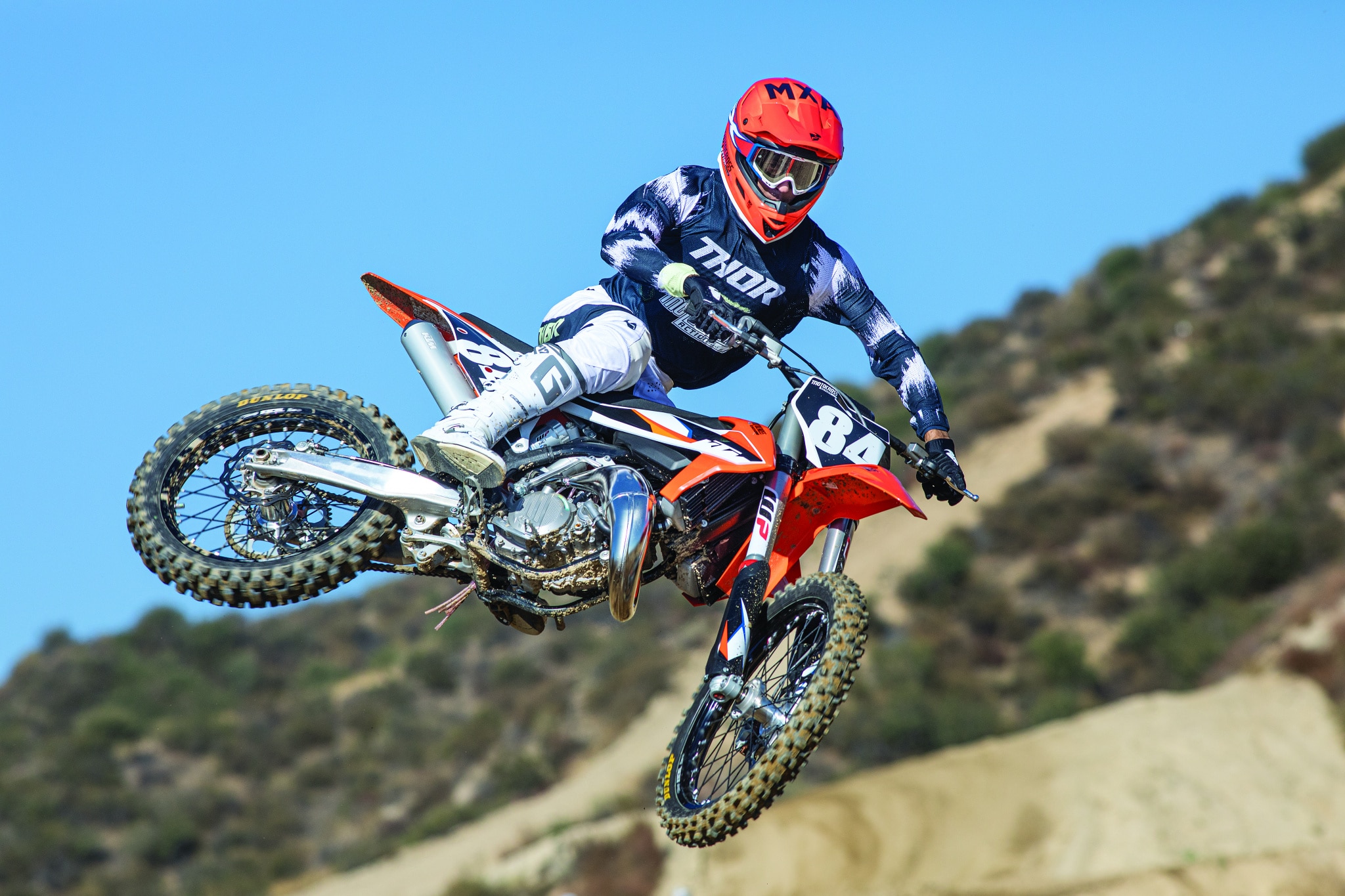
Q: FIRST AND FOREMOST, IS THE 2021 KTM 150SX BETTER THAN THE 2020 MODEL?
A: The KTM 150SX is better than its predecessor for the same reason the entire KTM motocross lineup is better—WP suspension upgrades. The rest of the 2021 KTM 150SX is fairly unchanged, save for a few small durability upgrades.
Q: HAVE KTM’S ENGINEERS MADE ANY SIGNIFICANT CHANGES TO THE KTM 150SX IN RECENT YEARS?
A: They did when they didn’t have to. Say what? If you haven’t noticed, KTM’s prime two-stroke competition has been on autopilot for the last 15 years. Yes, we are talking about the Yamaha YZ125. The rest of the “Big Four” Japanese brands think that two-strokes are dead. This line of thinking has been great for small boutique brands such as TM, Beta and Sherco, who have found a niche in the two-stroke market and have been developing their smoker lines. The toughest competition in the two-stroke market for KTM comes from Husqvarna and GasGas, but those brands don’t really count as competition for KTM, as they are all owned by the same guy (Stefan Pierer) and are platform sharing across all three brands.
To see the R&D timeline of the 2021 KTM 150SX, we need to go back to 2016 when the KTM 150SX started to become a refined and defined race bike. Here are the highlights of changes over the years.
2016: This was a good year for KTM but a bad year for WP. The KTM SX range of models received its best chassis to date. The bike offered the feel and flex characteristics that had been missing in comparison to the Japanese models. Where KTM went wrong in 2016 was with the WP 4CS forks. They were horrible forks—not as bad as previous WP closed-cartridge forks, but bad nonetheless, especially when compared to the Japanese competition. They were stiff initially and got softer throughout their stroke, creating a significant bottoming problem. The 4CS forks worked the opposite of how a fork should work.
However, 2016 was a big year for the KTM 125/150SX, as the engine got an overhaul as well. For 2016, the KTM 125/150 was an all-new bike. Every test rider loved it, save for the atrocious 4CS forks.
2017: KTM responded to the bad reviews of the 4CS forks and scratched that technology to roll out the first iteration of the WP AER air forks (now called XACT). This was a bold move that has paid off over time. The benefits of losing over 3 pounds by going from spring to air were impressive; however, consumers were still leery of air fork technology because of the overly complex nature of Showa’s and Kayaba’s air forks. Those forks left a bad taste in the mouth of any rider who raced with SFF-TAC or PSF-2 forks. Luckily, KTM had learned from the errors of Kayaba and Showa, and designed the easiest-to-use air fork technology on the market with settings that were not too bad. What was bad was the owner’s understanding of how to make air forks work to their fullest.
Where KTM went in the wrong direction in 2017 was the out-of-the-blue switch from Keihin to Mikuni carburetors. To sever a 28-year relationship with a company’s product that worked exceptionally well was a strange move. To this day, we don’t know the full details of why the switch was made, but we can only assume that it was because of money. The 38mm Mikuni TMX carb was a bust for two reasons: (1) KTM America didn’t know a 60:1 gas-to-oil ratio was supposed to be used. MXA still ran the normal 40:1, and the bike ran horribly. (2) When we finally got the memo to run the leaner 60:1 fuel mixture, it didn’t make our jetting issues much better. Jetting was very temperamental with respect to weather and elevation, unlike with the tried-and-true-but-banished Keihin carb.
2018: In 2018, KTM licked its wounds with the weird 60:1 pre-mix ratio and switched back to a normal 40:1 fuel ratio. Strangely, KTM stuck with the 60:1 ratio on the KTM 250SX and hasn’t looked back since. With the fuel ratio changed on the 125/150SX, KTM tailored the jetting to it. This jetting was much closer out of the box but still wasn’t perfect.
2019: KTM went from a chassis with great flex qualities to a more torsionally and longitudinally rigid one that was tailored to faster riders. We had mixed feelings about it, especially because the WP AER forks were initially too stiff for the harsher chassis. Not a good combination. With the chassis changes came bodywork alterations as well. These changes negatively affected the KTM engine’s ability to breathe. The airbox was smaller and had less ventilation, much like the suffocated Husky airbox. We don’t understand why KTM restricted its potent engine, but it did. We drilled holes in the airbox to improve the airflow.
On a positive note, KTM added power to the tiddler by altering the cylinder with an updated exhaust port layout, power valve and redesigned pipe. This upped the pony power by almost 1 horsepower.
2020: It was a boring year for the KTM 150SX in 2020. The biggest updates were to the WP suspension components. Oh yeah, KTM changed the name of the AER forks to XACT forks. Each year the WP suspension components got better and better; however, they still trailed the Kayaba SSS spring fork. Other than different reeds, a reworked kickstarter and an updated front-sprocket mounting system, not much changed for 2020.
2021: This synopsis brings us to the current 2021 KTM 150SX, which is just about as boring a story as in 2020. Again, big changes were made to the WP forks and shock. WP’s engineers had been hammering away looking for a way to make their air fork feel more like a spring fork. For the most part, WP accomplished that goal in 2021. The 2021 WP system works better than 95 percent of the spring forks on the market, but the SSS units on the Yamaha are still the best in class. WP made this jump in performance with a laundry list of changes inside the fork as well as the shock.
Other notable 2021 changes were a new throttle assembly, thicker inner clutch hub sleeve and the change from Dunlop MX3S to MX33 tires. 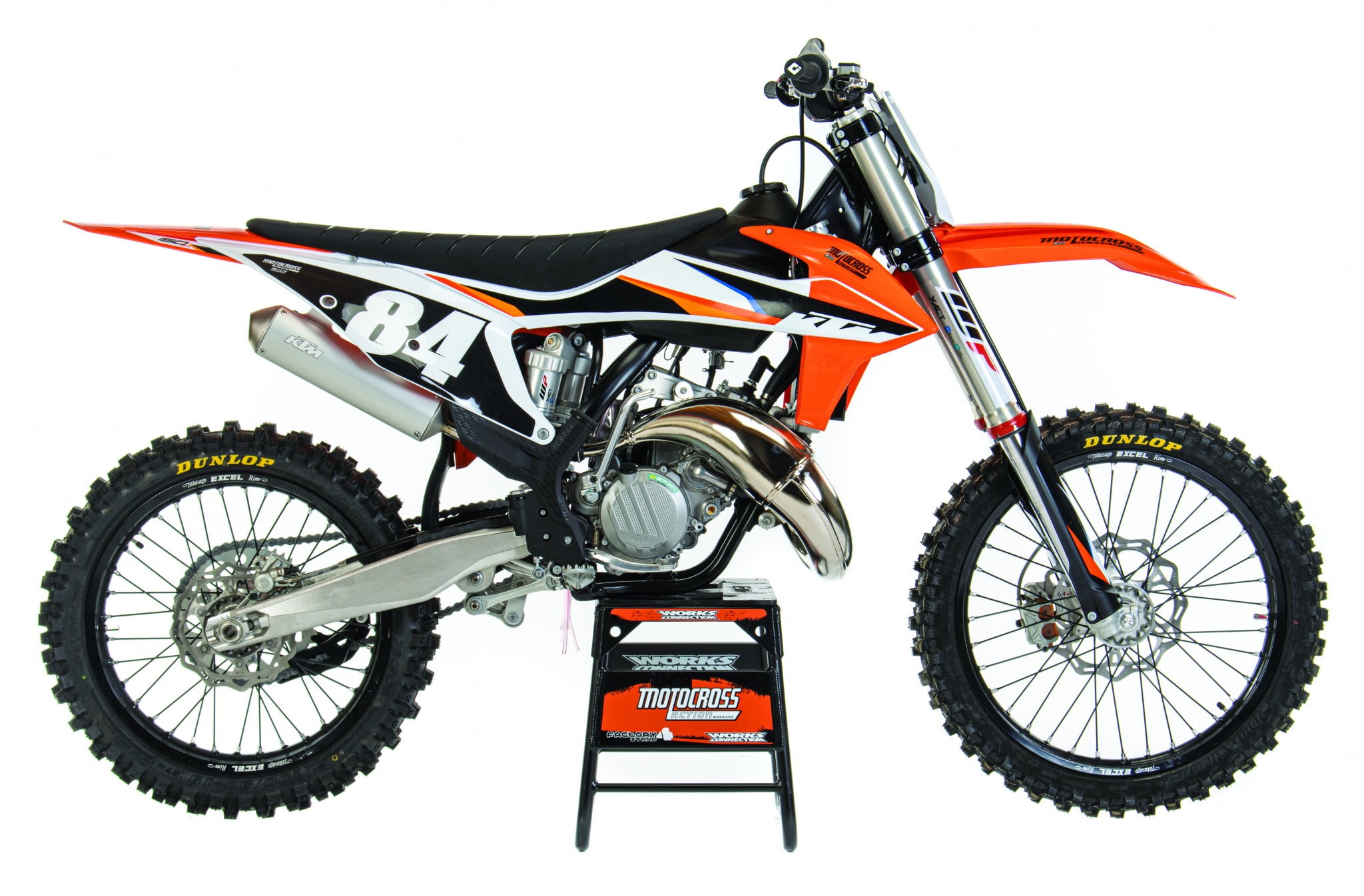 The 2021 KTM 150SX is simply a 125SX with a bigger piston and cylinder.
The 2021 KTM 150SX is simply a 125SX with a bigger piston and cylinder.
Q: HOW DOES THE KTM 150SX PERFORM COMPARED TO THE KTM 125SX?
A: If there were no displacement rules in the 125cc class and you were given the choice to race the KTM 125SX or 150SX, the answer seems like a no-brainer, right? After all, bigger displacement and more power are the proven formula for quicker lap times. Or so it would seem. Over the years, we have had countless test riders—big and small, fast and slow—ride the 150SX and 125SX back to back. When we asked them which tiddler they would rather race, 9 times out of 10, they chose the 125SX.
Why? Simple. The KTM 125SX is easier to ride. It is more fluid from gear to gear, and the more linear 125 powerband doesn’t rock the chassis back and forth. Also, when doing a long moto, you can be lazy and not shift if your right foot doesn’t feel like it. The shorter power curve of the 150SX is potent, but it signs off fast. If you resist shifting on the bubble, the weight of the bike moves forward, throwing the chassis out of whack.
We aren’t saying we don’t like the 150SX, because we do. Here are four reasons why: (1) It will holeshot the 125SX every time. Remember, a good start is half the battle. (2) It has the oomph to slingshot out of corners and get over jumps that you can’t clear cleanly on the 125SX. (3) It is more exciting to ride than the 125SX. (4) If you want 125SX-style power out of the 150SX, you can get it by sending your engine out to companies like Pro Circuit or Twisted Development. They will tighten the tolerances, port the cylinder and tune the ECU to get the style of power you’re looking for. You just have to pay through the nose for it. 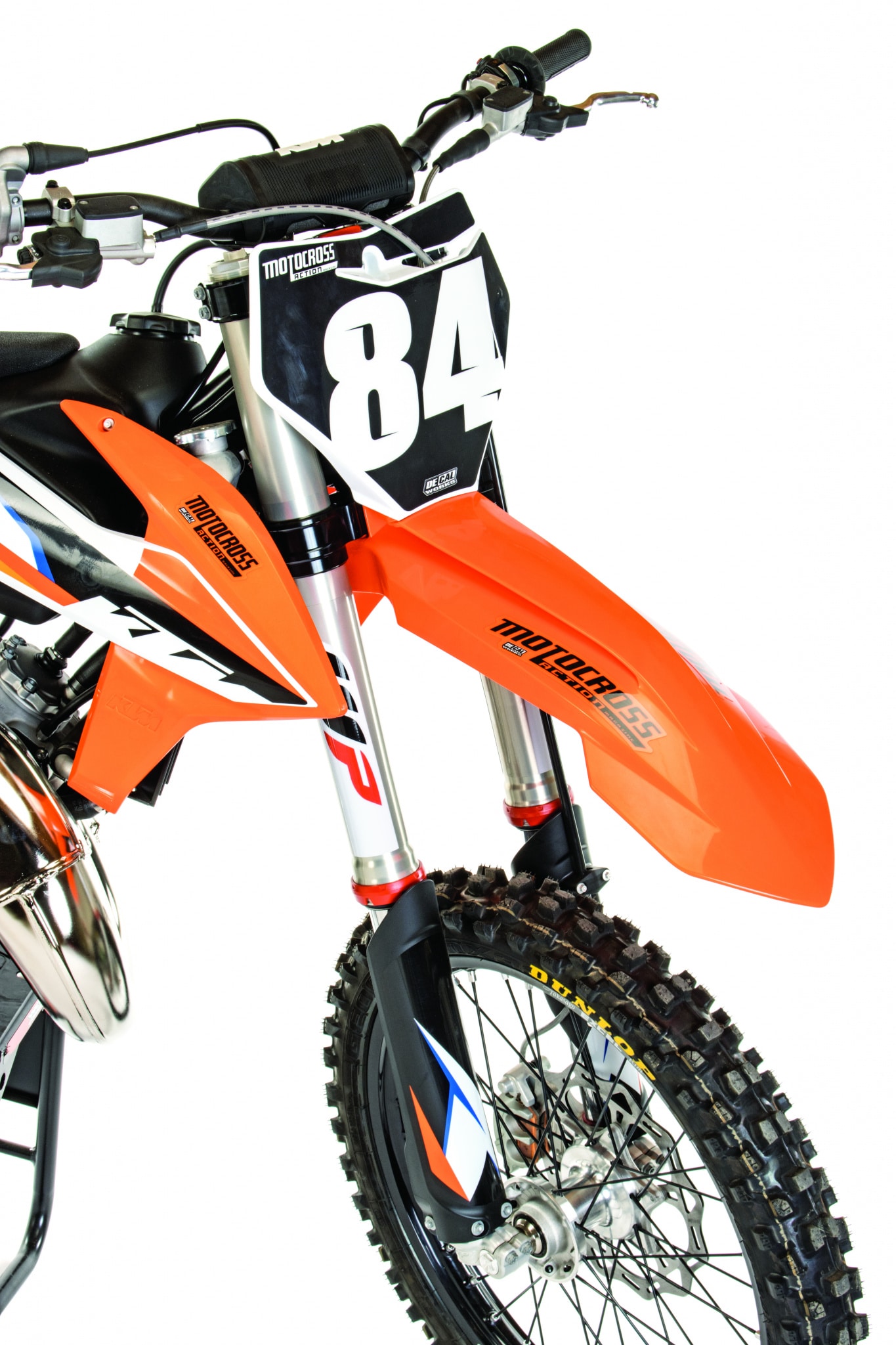 With the lightweight chassis and the supple WP XACT air forks, the KTM 150SX handled amazing.
With the lightweight chassis and the supple WP XACT air forks, the KTM 150SX handled amazing.
Q: WHO IS THE KTM 150SX FOR?
A: This is truly a Vet or professional practice rider bike. If you love tiddlers but don’t like to wring them to the moon for a plastic trophy, then the 150SX is for you. You can lug and short-shift the 150SX without any issues.
Q: HOW GOOD ARE THE UPDATED WP SUSPENSION COMPONENTS?
A: We feel like we are repeating ourselves every time we test a new 2021 KTM motocross model. The changes that the WP engineers made to the WP XACT forks and shock brought the KTM SX line to another level of handling. WP was fighting an uphill battle against public opinion. The air fork wasn’t well-received by customers who were die-hard coil-spring fork guys, which is just about anyone who rides a dirt bike. WP knew that to make customers happy they had to make their air forks “feel” like spring forks, which they accomplished for 2021. The updated WP forks track the ground much like a spring fork, and the ramp-up offers a more linear feel like spring forks.
We aren’t saying the XACT air forks on the 150SX are as good as the Kayaba SSS units of the YZ125, because they aren’t. Although, this is the closest any fork has ever been.
 The meat of the 150SX power is in its midrange.
The meat of the 150SX power is in its midrange.
Q: WHAT ARE THE EASIEST WAYS TO MAKE THE 2021 KTM 150SX BETTER?
A: Small changes can make a big difference.
(1) Power-valve adjuster. Many MXA test riders wanted a bigger spread of power. They achieved this by turning the power-valve adjuster all the way out and then in half a turn. This took away some bottom but lengthened over-rev.
(2) Pipe. We had great luck with aftermarket exhaust pipes on both the 125SX and 150SX. They livened up the powerband across the board.
(3) Gearing. Stock gearing on the 150SX is 13/48 (3.692 gear ratio). It’s a good combo for skilled racers who can carry speed. Pro test riders preferred a 14/49 combination, achieved by changing both the countershaft and rear sprockets (3.500 gear ratio). Tighter tracks and less-skilled riders did better with a 14/50 blend (3.571 gear ratio). The lower the gear ratio number, the closer each gear is to the next one. A low gear ratio, such as 3.500, pulls harder, gets to third gear sooner and works better for less skilled riders than high gear ratios, such as 3.692.
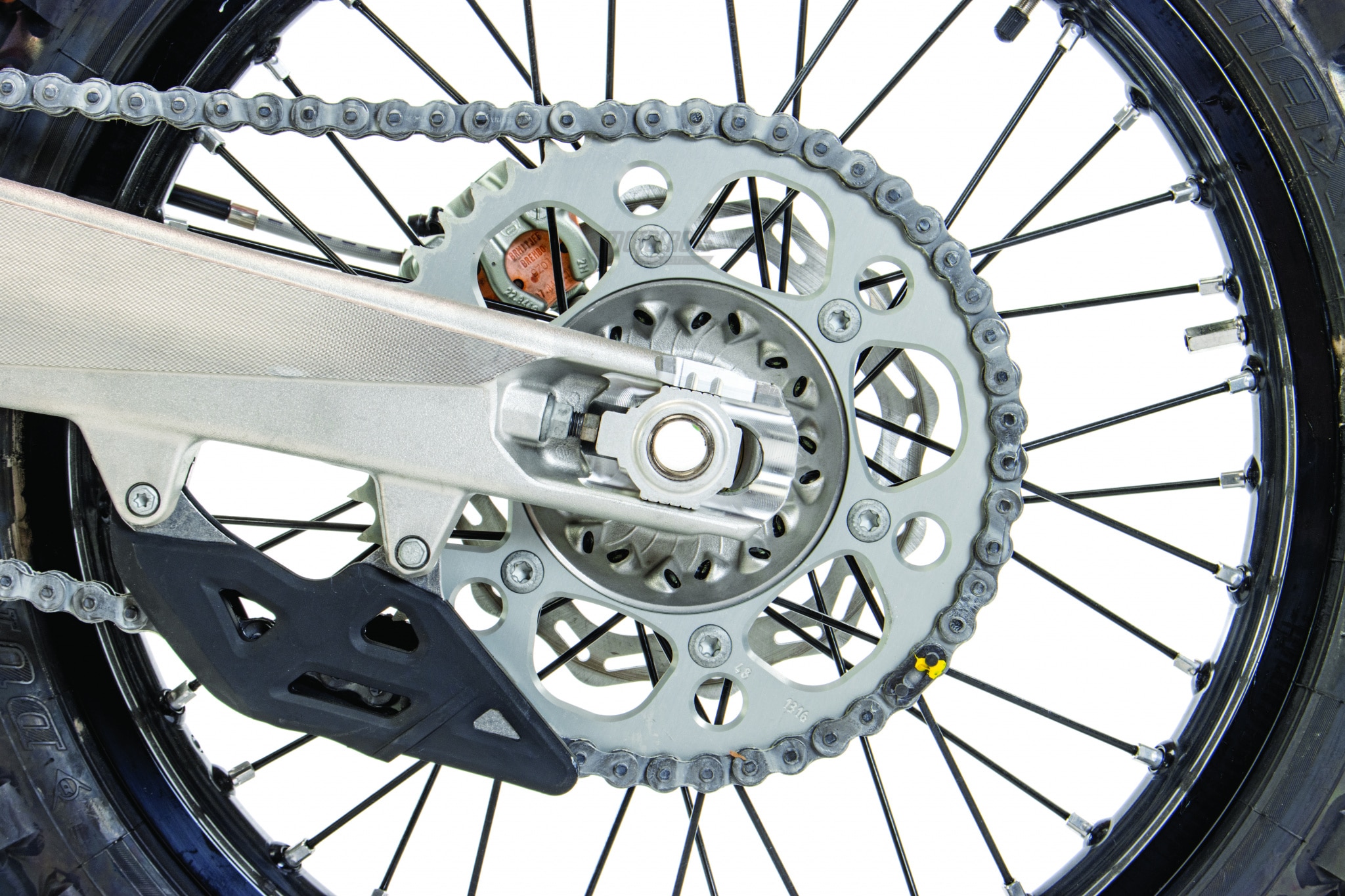 Fast riders went with taller gearing while slower riders went lower.
Fast riders went with taller gearing while slower riders went lower.
Q: WHAT DID WE HATE?
A: The hate list:
(1) Preload ring. There has to be a better way to adjust preload on a rear shock. When the shock is new and everything is working well, we don’t mind prying on the preload adjuster with a long screwdriver. But, once it gets a little glitchy, it becomes a hassle. It doesn’t take a lot of prying to tear up the nylon preload ring.
(2) Power-valve adjuster. The Robertson wrench (square) power-valve adjuster is useful, but who has a Robertson wrench? Be forewarned that if you resort to a flat-bladed screwdriver to make power-valve adjustments, the Robertson wrench will never fit again. On the other hand, we are glad there is a power-valve adjuster so we can fine-tune its power characteristics.
(3) Fork-bleed screw. The fork’s right-side air-bleed screw is a #15 Torx. KTM should go back to the Phillips-head screw that they used a few years back.
(4) Spokes. Even though the KTM wheels have new spoke nipples, the spokes still come loose. Before every ride, check the rear spokes next to the rim lock. If they are tight, you’re all right.
(5) Airbox. We are positive that we could get better throttle response and more horsepower if the airbox could breathe better. We know that because we run the optional vented airbox cover that comes with the SXF models.
Q: WHAT DID WE LIKE?
A: The like list:
(1) Weight. This bike feels as light as the sub-200-pound bike it is.
(2) Brakes. They are the best in class for a 223-pound 450 four-stroke. Imagine how good they are on a 195-pound 150.
(3) Hydraulic clutch. KTM’s self-adjusting clutch is ahead of its time. Go ahead and abuse it. It can take whatever you can dish out.
(4) Airbox cover. The no-tools airbox cover is awesome, and so is the trick way that KTM mounts the air filter.
(5) Engine. The power-to-weight ratio of the 150SX allows it to compete with some of the 250F bottom feeders.
(6) Suspension. The WP suspension components are better than most spring forks on the market.
(7) Tires. The 150SX comes with Dunlop Geomax MX33 tires front and rear—our tire of choice, since the MX3S got a bad rap for chunking side knobs.
Q: WHAT DO WE REALLY THINK?
A: Bottom line, KTM is the only big manufacturer dumping money into its two-stroke R&D department, and it shows. The 2021 KTM 150SX is a very fun bike to ride. It has the punch of excitement that 125cc machines lack. Riders love this bike because it is more exciting on the track. It makes big jumps easier and has a fighting chance in a drag race against a 250F.
MXA’S 2021 KTM 150SX SETUP SPECS
This is how we set up our 2021 KTM 150SX for racing. We offer it as a guide to help you find your own sweet spot.
WP XACT FORK SETTINGS
First, focus on balancing out the bike for your weight by adjusting the air in the forks. If the forks are diving into the corners, go up a few psi. If they tend to be rigid and push out on the entrance of corners, drop the psi down a few points. The forks have good bottoming resistance, so going softer for a plusher ride is not an issue. For hardcore racing, we recommend this fork setup for the 2021 KTM 150SX (stock settings in parentheses):
Air pressure: 151 psi
Compression: 12 clicks out
Rebound: 18 clicks out
Fork-leg height: Stock
Notes: Make sure to check your air pressure and bleed both of the air screws on the top of the forks each ride.
WP SHOCK SETTINGS
After we set sag at 106mm, most riders didn’t change a thing. For hardcore racing, we recommend this shock setup for the 2021 KTM 150SX (stock specs are in parentheses):
Spring rate: 39 N/mm
Race sag: 106mm
Hi-compression: 2 clicks out
Lo-compression: 12 clicks out
Rebound: 15 clicks out
Notes: The stock shock settings are in the ballpark.
MIKUNI TMX 38MM JETTING SPEC
Here is what we ran in our 38mm TMX.
Main jet: 500
Pilot: 35
Needle: 6BFY43-71
Clip: 2nd
Air screw: 2.5 turns out



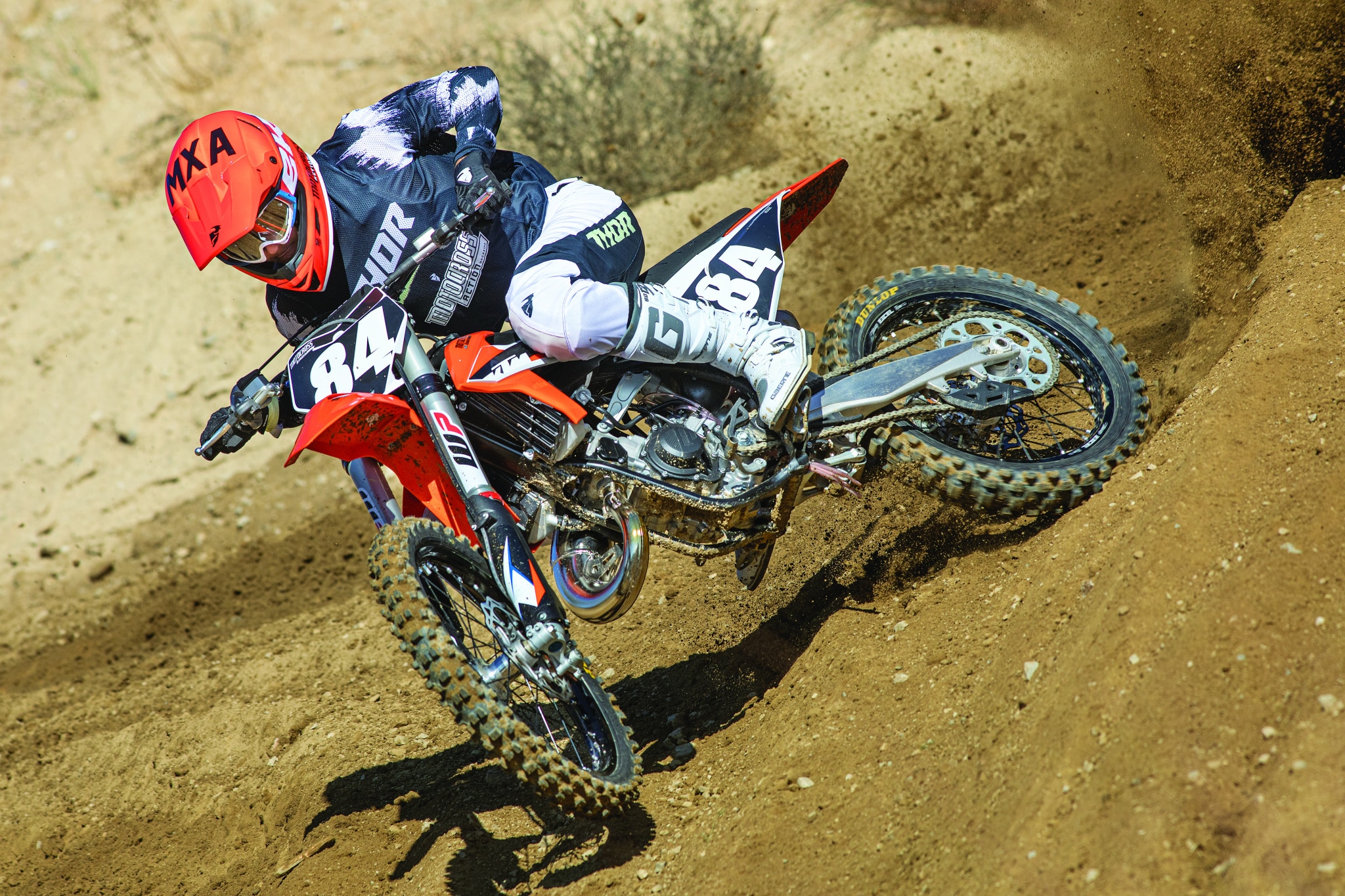


Comments are closed.